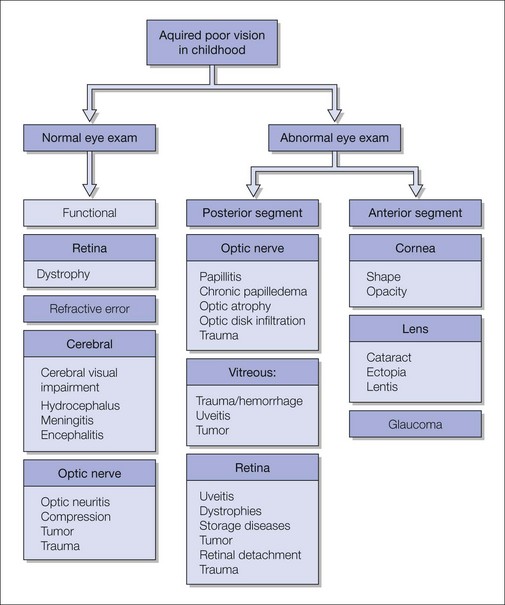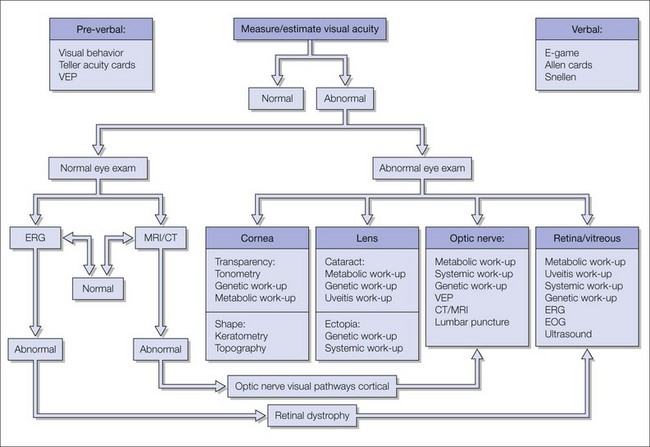Chapter 104 My child could see perfectly but now the vision is weak
Visual loss in an otherwise healthy child is an alarming finding for both the family and clinician. Children often do not complain of decreased vision, and it is common for them to present with severe visual loss. Visual loss may result from congenital problems, only noticed later in life when visual requirements increase at school or when the child had normal vision followed by chronic or acute visual loss (Fig. 104.1).
When investigating acquired visual loss, a comprehensive medical history is essential. Ask about the pregnancy, delivery, gestational age, birth weight, perinatal problems, developmental milestones, ocular and medical anomalies, medications, and family history of systemic and/or visual problems (Fig. 104.2). Seek details regarding trauma, timing, duration, and severity of visual loss.
Irrespective of whether the onset of visual loss is acute or chronic, ophthalmic examination may in most cases reveal abnormalities in the anterior and/or posterior segment, although the site of visual loss may be intracranial (see Chapters 54 and 56). Details about photophobia and eye movement disorders, including strabismus and nystagmus, may be especially helpful in reaching a diagnosis.
Examination
Anterior segment
Cornea
Various diseases may affect the cornea. Developmental glaucoma may present with increased corneal diameter because of the elasticity of the collagen fibers in young children. Corneal transparency may be reduced by several conditions, including developmental glaucoma (see Chapter 37), infectious keratitis (see Chapter 33
Stay updated, free articles. Join our Telegram channel

Full access? Get Clinical Tree




